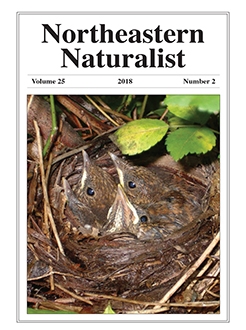In the upper midwestern US and parts of Canada, forests dominated by Populus tremuloides (Aspen) are increasingly being considered as a bioenergy feedstock for power plants. When used for bioenergy, these forests are harvested at much younger ages than when they are used for more traditional products, such as pulpwood and lumber. To better understand the potential consequences of a shift in shorter-rotation-harvest strategies on avian communities, we employed point counts to examine bird community composition in a chronosequence (10-45 y since harvest) of 12 coppiced, even-aged Aspen stands. Young (8-15 y old), middle (20-44 y old), and mature (45 y old) stands had no significant differences in species richness or relative abundance, but distinct avian community assemblages were associated with each stand-age class. Four bird species were significantly associated with a particular age class. Maintaining a wide range of Aspen stand-age classes in the landscape appears to be the best strategy for conserving a diverse bird community in this region.
How to translate text using browser tools
1 May 2018
Avian Community Response to Short-rotation Aspen Forest Management
Gina M. Jarvi,
Jessie L. Knowlton,
Colin C. Phifer,
Amber M. Roth,
Christopher R. Webster,
David J. Flaspohler
ACCESS THE FULL ARTICLE

Northeastern Naturalist
Vol. 25 • No. 2
May 2018
Vol. 25 • No. 2
May 2018




